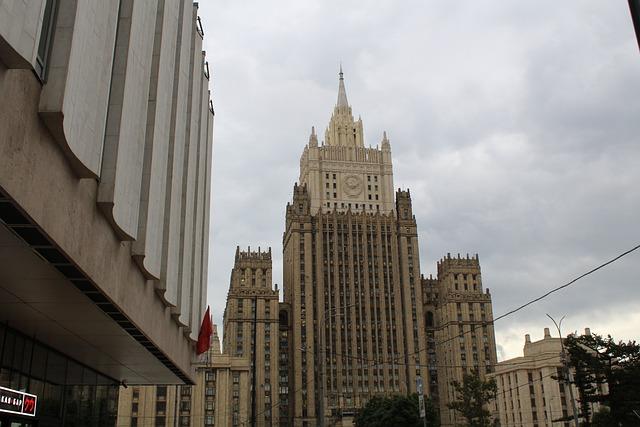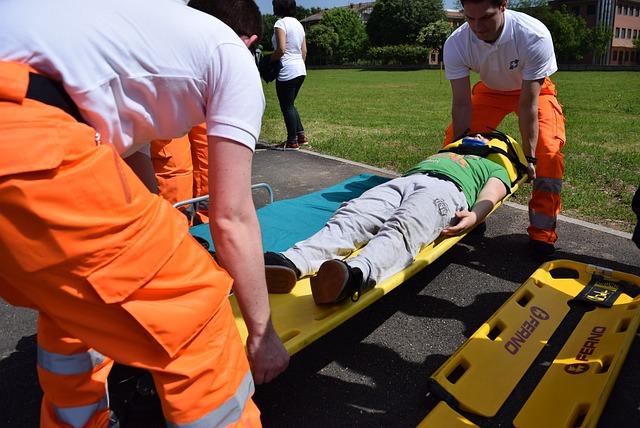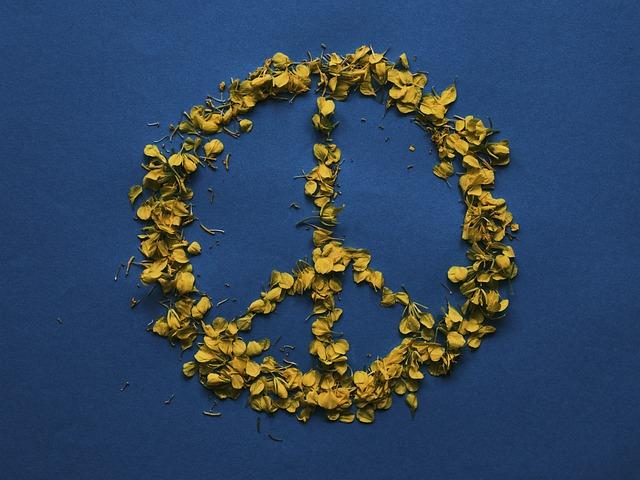Within the intricate tapestry of Central African geopolitics, few tales resonate as powerfully because the Rwandan intervention within the japanese Democratic Republic of Congo (DRC). This advanced narrative, woven via many years of clash and political maneuvering, is epitomized by means of the acronyms that experience develop into synonymous with violence and upheaval—AFDL and M23. As regional dynamics shift, the legacies of those actions disclose a lot in regards to the ongoing struggles for energy and affect within the area. on this article, we delve into the historic context in the back of those names, exploring how Rwandan involvement has formed the political panorama of the DRC and the wider implications for peace and steadiness in Africa. Thru an in depth exam of previous and provide conflicts, we intention to make clear the underlying forces at play, providing a complete working out of a state of affairs that is still as related as ever within the quest for regional steadiness.
The Ancient Context of Rwandan Intervention in Jap DRC
The advanced interaction of politics, ethnicity, and useful resource regulate within the Nice Lakes area has formed the Rwandan intervention in japanese DRC, characterised by means of vital historic occasions. Following the 1994 Rwandan genocide, tens of millions of Rwandans, together with perpetrators, sought shelter in neighboring Zaire (now the Democratic Republic of Congo). The toppling of Zaire’s dictator, Mobutu Sese Seko, in 1997 by means of the AFDL (Alliance of Democratic Forces for the Liberation of Congo), in large part supported by means of Rwanda, exemplifies Rwanda’s strategic hobby in mitigating perceived threats from Hutu militants working alongside the border.This intervention, framed as a humanitarian necessity, laid the groundwork for additional involvement from Rwanda in DRC affairs, resulting in extended instability within the area.
Within the years following, the upward push of quite a lot of armed teams like M23 will also be traced again to each inner DRC dynamics and exterior influences, together with Rwandan pursuits.Those teams often sufficient sought to milk the chaos following the 2nd Congo Battle, which started in 1998 and drew in a couple of regional gamers. Key elements riding Rwandan involvement come with:
- Ethnic affiliations: The Tutsi-led Rwandan executive has traditionally aligned with Tutsi militias in japanese Congo.
- Useful resource exploitation: Keep watch over over rich mineral deposits has intensified conflicts.
- Safety issues: Rwanda’s intervention is justified as important to battle threats from hutu insurgents.
Working out the AFDL and M23: key Gamers within the Warfare
The AFDL (Alliance of Democratic Forces for the Liberation of Congo-zaire) and M23 (March 23 Motion) are two vital entities that experience emerged within the advanced panorama of the japanese Democratic Republic of Congo (DRC). Each teams, whilst distinct, percentage a not unusual lineage of their formation and objective, closely influenced by means of the historic context of regional dynamics, specifically the Rwandan intervention within the DRC. The AFDL’s upward thrust to prominence all through the First Congo Battle within the mid-Nineties facilitated the overthrow of dictator Mobutu Sese Seko, pushed by means of figures like Laurent-Désiré Kabila, who won really extensive enhance from rwanda.This intervention used to be first of all framed as a humanitarian effort to handle the refugee disaster because of the Rwandan Genocide, but it briefly morphed right into a strategic marketing campaign for energy and regional affect.
Following the 1997 status quo of Kabila’s regime, the M23 emerged in 2012, fueled by means of grievances some of the Congolese Tutsi inhabitants referring to discrimination and a resurgence of hostilities from quite a lot of military teams within the area. Key motivations in the back of the M23’s movements come with:
- Claiming political popularity and rights for marginalized communities.
- Responding to alleged executive disasters to uphold peace agreements.
- In the hunt for to handle ongoing safety threats posed by means of armed teams.
In spite of inner and exterior pressures, each the AFDL and M23 spotlight the intricate internet of native and world pursuits shaping the clash. Working out those teams is an important for comprehending the continued strife in japanese DRC and the wider geopolitical ramifications that stretch past its borders.

The Affect of the Rwandan Affect on Native communities
The affect of Rwanda within the japanese areas of the democratic Republic of Congo has left indelible marks on native communities, each socially and politically. Through the years, the interventions have altered dynamics inside of those communities, resulting in shifts in management and tool buildings. Many locals have discovered themselves stuck within the crossfire, as quite a lot of armed teams and political actions—similar to AFDL and M23—proliferate within the wake of Rwandan affect. The direct effects have incorporated:
- Displacement of populations: Huge numbers of civilians have fled their properties, making a humanitarian disaster.
- Adjustments in governance: The ability vacuum created by means of clash has often sufficient been stuffed by means of new factions supported by means of Rwanda.
- Affect on social concord: Ethnic divisions were exacerbated, resulting in distrust and violence amongst other network teams.
additionally, the commercial panorama has been remodeled as Rwandan involvement incessantly seeks to harness the area’s wealthy herbal sources, contributing to native economies but additionally fuelling clash. The exploitation and business of precious minerals have altered the livelihoods of many, resulting in each alternatives and demanding situations. Communities now stumble upon:
| Financial Adjustments | Implications |
|---|---|
| Useful resource Extraction | Financial receive advantages vs. environmental degradation |
| Vending of Minerals | Jobs created however dangers of exploitation |
| Exterior Funding | Expansion possible as opposed to dependency on overseas pursuits |

Global Responses and the Want for a Diplomatic Means
The continuing clash in japanese Democratic Republic of Congo, intertwined with Rwandan involvement, has brought on a posh array of world reactions. More than a few international locations and organizations have voiced issues over the escalating violence and humanitarian disaster. The world network has emphasised the need of collaborative efforts to foster peace, with requires:
- Diplomatic negotiations involving all stakeholders
- Greater humanitarian help to enhance the ones suffering from the clash
- Force on regional leaders to stick to peace agreements
Moreover, key gamers such because the African Union and the United Countries have initiated discussions aimed toward resolving the disaster via conversation relatively than army intervention. This diplomatic manner acknowledges that lasting peace would require addressing the basis reasons of the clash, which come with:
- Useful resource exploitation and its have an effect on on native communities
- Move-border tensions fueled by means of historic grievances
- strengthening governance in affected areas
In the end, failure to undertake a unified diplomatic stance dangers additional destabilization no longer onyl within the DRC however around the area, underlining the urgency of fostering world cooperation to reach enduring peace.

Lengthy-term Suggestions for Steadiness within the Area
To foster lasting steadiness within the japanese areas of the Democratic Republic of Congo, a number of complete measures will have to be followed by means of native governments, world stakeholders, and civil society organizations. Strengthening governance is very important, as efficient governance can considerably scale back the facility of armed teams like AFDL and M23. This will also be completed via:
- Bettering duty and transparency inside of army and political spheres.
- Selling inclusive discussion amongst quite a lot of network leaders and factions.
- Imposing native development projects to handle financial grievances.
Additionally, the position of world cooperation is paramount in addressing the underlying demanding situations. Regional collaboration can function an important device in selling safety and reconciliation.Concrete movements would possibly come with:
- Setting up cross-border tracking mechanisms to discourage exterior interventions.
- Facilitating peace negotiations inclusive of all affected stakeholders.
- Making an investment in conflict-resolution techniques and training to empower communities.

Trail Ahead: Construction Peace and Reconciliation in Jap DRC
The search for peace and reconciliation in Jap Democratic Republic of Congo is a multifaceted problem that necessitates a collaborative manner amongst quite a lot of stakeholders. Native communities,executive our bodies,and world organizations will have to interact in discussion to handle the basis reasons of the clash,which come with land disputes,ethnic tensions,and the lingering results of overseas interventions.A complete peacebuilding technique may focal point on growing inclusive governance buildings that empower marginalized populations, making sure their voices are heard within the decision-making procedure. Additionally, improving native economies via projects similar to sustainable agriculture and renewable power tasks would possibly foster steadiness by means of offering livelihoods and lowering dependency on armed teams.
Additionally, projects aimed toward transitional justice and reparations will have to be prioritized to heal the scars of previous violence. This involves putting in community-based reconciliation techniques that inspire discussion and working out amongst other ethnic teams. An efficient type may resemble a network discussion board the place native leaders and citizens percentage their reviews and forge a collective trail in opposition to rebuilding agree with. It is very important to combine gender-sensitive approaches in all peace efforts, spotting the an important position girls play in clash decision. Those approaches can come with instructional campaigns to problem societal norms, thereby empowering girls to participate in peace negotiations in any respect ranges.
Key Takeaways
As we conclude our exploration of the advanced interaction between the Rwandan intervention and the quite a lot of actions inside the japanese democratic Republic of Congo, together with the AFDL and M23, it turns into obtrusive that those names are greater than mere acronyms; they represent a tumultuous bankruptcy within the area’s historical past. The involvement of Rwanda in Congolese affairs has no longer most effective reshaped the political panorama however has additionally left profound implications for the steadiness and safety of all of the area. Working out this historic context is an important for any significant discussion about peace and reconciliation within the DRC. As stakeholders proceed to navigate those multifaceted problems, the will for a complete manner that recognizes each native grievances and regional dynamics stays very important. The continuing state of affairs serves as a reminder of the long-lasting legacy of clash, and highlights the pressing want for answers rooted in cooperation and admire for sovereignty. The tale of the DRC continues to be being written, and its long term is determined by the teachings discovered from the previous.
Source link : https://afric.news/2025/02/19/africa-dr-congo-behind-names-like-afdl-or-m23-lies-the-rwandan-intervention-in-the-east-of-the-democratic-republic-of-congo-agenzia-fides/
Creator : AfricNews
Post date : 2025-02-19 06:24:00
Copyright for syndicated content material belongs to the related Source.



